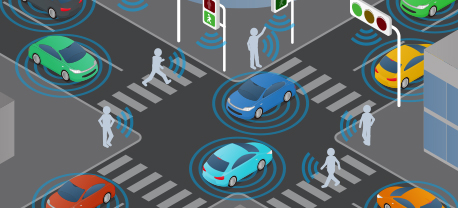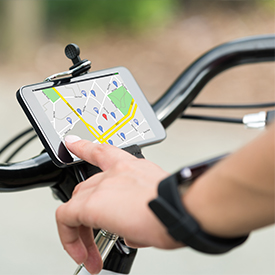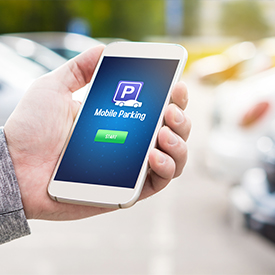Intelligent Transportation Systems
Working Toward Safer & Smarter Streets
The concept of an Intelligent Transportation System (ITS) has existed for decades. In the United States, research, development and implementation of ITS projects have tended to focus on operations and management of highways; in fact one of the major programs of the USDOT Intermodal Surface Transportation Efficiency Act (1991) was the “Intelligent Vehicle-Highway System” which was the precursor to ITS.
We have been involved in those ITS deployments since our inception in 1985. At the time our work included planning and design of data communications networks, monitoring cameras, central management systems, ramp metering, weather monitoring equipment, etc.
Since then, the ITS concept has evolved. ITS projects are focused on all aspects of the transportation system, and due to advances in communication and an explosion of mobility management applications, ITS now includes all travel modes, all elements of the network, and is measured on its ability to improve safety as much as its ability to keep traffic moving. Many forward-thinking cities include ITS elements in their aspirations to evolve into smart cities – an urban area that uses technology to derive data and improve quality of life for citizens and visitors.
Creatively Using Technology in Fremont, CA
Fremont, California is one example of a city evolving their transportation management capabilities as part of an overall effort to allow the city to work smarter. We partnered with the city and are working to evolve their capabilities to manage the Fremont Boulevard corridor to match the need for that corridor to increasingly serve pedestrians, bicyclists, emergency and transit vehicles, in addition to the automobiles it has served for years.
Called the Fremont Boulevard Safe & Smart Corridor, the project is the city’s bold vision to creatively use technology to move traffic efficiently along the corridor at a safe speed, ensure safe pedestrian and bicycle movement, enhance transit service, and improve management of the traffic signal and lighting systems. The 10-mile section of Fremont Boulevard, between Paseo Padre Parkway and Cushing Parkway, will serve as a nationally significant demonstration of current traffic safety technologies and a test bed for new innovation. In addition, the project will support the Vision Zero policy goals related to eliminating traffic fatalities and Climate Action Plan sustainability goals to reduce transportation-based greenhouse gas emissions through transportation mode shift and reduced energy consumption.
As part of a team led by Parsons Transportation Group, we are helping to plan and design the project which includes developing concepts, including:
Adaptive traffic signal control, adaptive street lighting
Dynamic speed limits
Conditional transit signal priority
Connected mobile applications for bicyclists
Connected vehicle communication
Automated detection of pedestrians in crosswalks
Smart parking demonstrations
Traffic detection and monitoring systems coupled with artificial intelligence and advanced analytics
We are currently engaged in the preliminary engineering phase working to establish project concepts. The project is nearing the end of this phase and is expected to be under construction in 2020.



Learn more by contacting one of our industry experts.
Quick Links
© 2017 – 2024 Fehr & Peers. All rights reserved.

